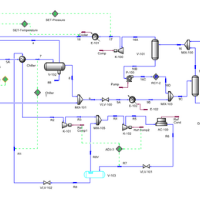
Find out which PetroSkills courses facilities engineers are taking to advance their careers! [Keep reading]




Find out which PetroSkills courses facilities engineers are taking to advance their careers! [Keep reading]

Find out which PetroSkills courses reservoir engineers are taking to advance their careers! [Keep reading]

We are excited to announce the release of our complimentary E-Book - download your copy today! [Keep reading]

The fabrication of a U. S. Government Cargo Ship named the Marlene Hitch, delivered during July 1945 in Duluth MN, unknowingly issued in the groundwork for the world-changing commercial activities of exporting Liquefied Natural GAS (LNG) as a viable energy source. The vessel later renamed the Methane Pioneer, shown in Figure 1, was refitted for LNG transport, and designed to carry 5000 m3 (31,450 Bbls) of LNG equivalent to some 2,335 tonnes (110 MMscf). Her maiden voyage was from Constock's LNG production facility on the Calcasieu River in Louisiana, carrying the world's first ocean cargo of LNG. It left port on 25 January 1959 and reached its destination at Canvey Island in England on 20 February, taking 27 days to cross the Atlantic Ocean. [Keep reading]

This Subsurface Tip of the Month discusses geostatistical approaches for determining the probability of oil and gas in a prospect. [Keep reading]

This Tip of the Month investigates the impact of the TA on the performance of a mechanical refrigeration plant with mono-ethylene glycol (EG or MEG) injection for hydrocarbon dew point (HCDP) control. Specifically, how the TA impacts the gas-gas heat exchanger, chiller duties and the operation of the mechanical refrigeration system. [Keep reading]